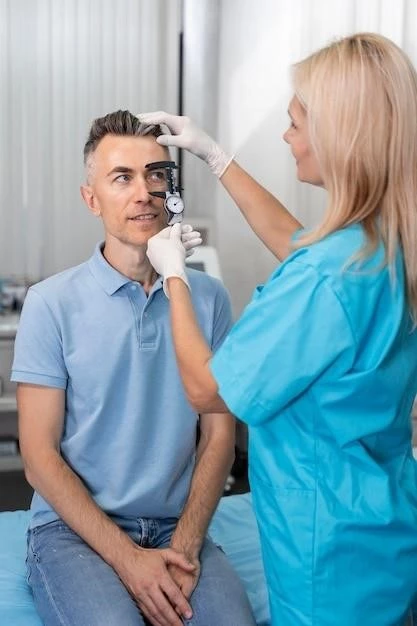Understanding Cataracts and Surgical Treatment
Introduction to Cataracts
Cataracts are a common eye condition that affects the clarity of the lens, leading to vision problems․ They often develop slowly and can occur in one or both eyes․ Cataracts are typically associated with aging but can also be caused by various factors like diabetes, smoking, or prolonged sun exposure․
As cataracts progress, they can cause blurred vision, sensitivity to light, and difficulty seeing at night․ Early detection and proper management are crucial to preserving vision quality․ If you suspect you have cataracts, consult an ophthalmologist for a comprehensive eye exam to determine the best course of action․
Understanding the causes, symptoms, and risk factors associated with cataracts can help you take proactive steps to protect your vision health․ Stay informed about cataracts and the available treatments to make informed decisions about your eye care․
Causes of Cataracts
Cataracts can be caused by various factors, with aging being the primary cause․ Other common causes include⁚
- Genetics⁚ Family history of cataracts can increase your risk․
- Medical Conditions⁚ Diabetes, hypertension, and obesity can contribute to cataract development․
- Smoking and Alcohol Consumption⁚ These habits can accelerate cataract formation․
- UV Radiation⁚ Prolonged exposure to sunlight without protection․
- Eye Trauma⁚ Injuries to the eye can lead to cataracts․
- Medications⁚ Certain medications like corticosteroids can promote cataract growth․
Understanding the causes of cataracts can help you adopt preventive measures to reduce your risk․ Ensure regular eye check-ups, protect your eyes from harmful UV rays, maintain a healthy lifestyle, and manage underlying medical conditions to lower your chances of developing cataracts․
Symptoms of Cataracts
Cataracts can manifest with various symptoms that may worsen over time․ Common signs of cataracts include⁚
- Blurry Vision⁚ Difficulty seeing clearly, especially at night․
- Glare Sensitivity⁚ Trouble with bright light, making driving or reading challenging․
- Color Fading⁚ Colors may appear dull or faded․
- Double Vision⁚ Seeing multiple images in one eye․
- Frequent Prescription Changes⁚ Need for new eyeglass prescriptions often․
- Poor Night Vision⁚ Struggling to see in low-light conditions․
If you experience any of these symptoms, consult an eye care professional for a comprehensive eye exam․ Early detection of cataracts allows for timely treatment, preserving your vision and maintaining your quality of life․ Don’t ignore changes in your vision; seek prompt evaluation to address potential cataract issues․

Prevention of Cataracts
While cataracts are predominantly age-related, there are lifestyle choices and habits you can adopt to potentially reduce your risk of developing cataracts⁚
- Protect Your Eyes⁚ Wear sunglasses with UV protection and hats outdoors․
- Healthy Diet⁚ Include antioxidant-rich foods like fruits and vegetables in your meals․
- Quit Smoking⁚ Smoking contributes to cataract development, so seek support to quit․
- Maintain a Healthy Weight⁚ Obesity can increase the risk of cataracts․
- Manage Medical Conditions⁚ Keep conditions like diabetes and hypertension under control․
- Regular Eye Exams⁚ Schedule routine eye check-ups to monitor eye health and catch any issues early․
By incorporating these preventive measures into your daily routine, you can take proactive steps to safeguard the health of your eyes and potentially lower your risk of cataracts․ Prioritize your eye health to enjoy clear vision for years to come․
Cataracts in Elderly Population
Cataracts are highly prevalent among the elderly population, with age being a significant risk factor for their development․ As individuals age, changes in the eye’s lens structure can lead to the formation of cataracts․ Older adults may experience cataracts in one or both eyes, impacting their overall vision․
It is essential for seniors to prioritize regular eye examinations to monitor their eye health and detect cataracts early․ Addressing cataracts promptly can help maintain quality of life and independence by ensuring clear vision․ Elderly individuals should be aware of the symptoms of cataracts and seek professional eye care if any changes in vision occur․
Encouraging elderly loved ones to stay informed about cataracts, adhere to healthy lifestyle practices, and seek timely treatment can significantly impact their eye health and overall well-being․ Supporting older adults in managing their eye health can enhance their quality of life and independence in their senior years․
Surgical Treatment for Cataracts
Surgical treatment is often recommended for cataracts that significantly impair vision and impact daily activities․ Cataract surgery involves removing the cloudy lens and replacing it with an artificial intraocular lens (IOL) to restore clear vision․ This procedure is safe, effective, and commonly performed on an outpatient basis․
Modern cataract surgery techniques, such as phacoemulsification, involve using ultrasound energy to break up the cataract for easier removal․ The surgery is minimally invasive, with a quick recovery time and high success rates in improving vision․ Patients who undergo cataract surgery often experience enhanced visual clarity and reduced dependency on glasses․
Before opting for cataract surgery, individuals should consult with an ophthalmologist to discuss their options, address any concerns, and determine the most suitable approach for their specific needs․ Following surgery, post-operative care and adherence to the prescribed recovery plan are crucial for optimal outcomes․
By understanding the process of cataract surgery and actively participating in the decision-making process, individuals can regain clear vision, improve their quality of life, and continue to enjoy daily activities with renewed visual acuity․
Lifestyle Changes to Manage Cataracts
While cataracts are a common age-related condition, certain lifestyle modifications can help manage cataracts and support overall eye health⁚
- Healthy Diet⁚ Incorporate foods rich in antioxidants like leafy greens, berries, and nuts․
- Manage Chronic Conditions⁚ Control conditions like diabetes and hypertension to reduce cataract risk․
- Regular Exercise⁚ Stay physically active to promote overall health and well-being․
- Protective Eyewear⁚ Wear sunglasses with UV protection and safety glasses in hazardous environments․
- Quit Smoking⁚ Smoking can accelerate cataract formation, so seek support to quit․
- Maintain Healthy Weight⁚ Obesity is linked to a higher risk of developing cataracts․
- Limit Alcohol Consumption⁚ Excessive alcohol intake can impact eye health․
By making informed choices and adopting a healthy lifestyle, individuals can contribute to maintaining good eye health and potentially reduce the progression of cataracts․ Consult with an eye care professional for personalized recommendations on managing cataracts and preserving your vision for years to come․
Cataracts and Vision Loss
Cataracts can significantly impact vision, causing various visual disturbances that affect daily activities․ As cataracts progress, individuals may experience⁚
- Blurry or Cloudy Vision⁚ Objects may appear less sharp or clear․
- Glare Sensitivity⁚ Difficulty seeing in bright light or while driving at night․
- Double Vision⁚ Seeing two images instead of one․
- Color Fading⁚ Colors may appear dull or yellowed․
- Poor Night Vision⁚ Struggling to see in low-light conditions․
- Frequent Changes in Eyeglass Prescription⁚ Needing new prescriptions often․
Recognizing the impact of cataracts on vision is crucial in seeking timely treatment to restore visual acuity and quality of life․ Consultation with an eye care specialist can help determine the appropriate intervention, whether through lifestyle changes, corrective lenses, or surgical options, to address cataracts and minimize vision loss․
Don’t delay seeking professional guidance if you suspect cataracts are affecting your vision․ By addressing cataracts promptly, you can enhance your visual clarity and maintain an active lifestyle with improved eyesight․
Cataract Surgery Complications
While cataract surgery is generally safe and successful, like any surgical procedure, it carries inherent risks of potential complications; Some complications that can arise post-cataract surgery include⁚
- Infection⁚ Risk of post-operative infection, although rare with modern sterilization techniques․
- Swelling or Inflammation⁚ Some patients may experience temporary inflammation or swelling․
- Persistent Eye Redness⁚ Redness may occur due to the eye’s natural healing process․
- Increased Eye Pressure⁚ In some cases, eye pressure may temporarily rise․
- Clouding of Lens Capsule⁚ A secondary cataract or clouding of the lens capsule can sometimes occur․
- Retinal Detachment⁚ Rarely, the retina may become detached following cataract surgery․
It is essential to follow all post-operative care instructions provided by your eye surgeon to minimize the risk of complications and ensure optimal healing․ If you experience persistent pain, vision changes, or other concerning symptoms after cataract surgery, promptly contact your eye care provider for evaluation and management․
Having a thorough discussion with your ophthalmologist about the potential risks and benefits of cataract surgery can help you make an informed decision and approach the procedure with confidence․
